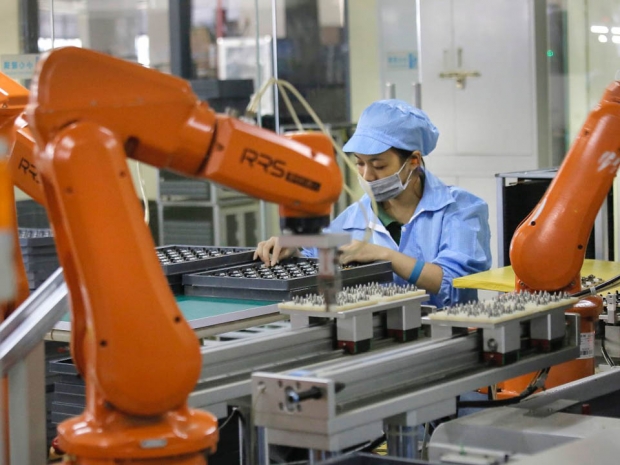Dai Jia-peng, Foxconn's GM of the Automation Technology Development Committee, says that the company has produced and deployed over 40,000 in-house industrial robots called “Foxbots” at its factories in China. It can now produce roughly 10,000 robots per year, allowing the slow and progressive replacement of human labor in many of its single-task jobs.
Back in May, the company fired 60,000 employees at one of its factories because it had automated “many of the tasks associated with its operations,” though most of them were repetitive tasks. It released a statement saying employees were being trained to focus on higher value-added elements such as R&D, process control, and quality control.
Most robots only perform well at single tasks
While in the long term, Foxbots are much cheaper to deploy than human labor, the initial investment is still costly and requires extensive precision adjustments and reprogramming for each unit to perform multiple tasks. The main drawback, Foxconn says, is that it is difficult to reprogram the machines to operate outside of a single function, and this is a major area where its human workforce has the advantage of quickly switching from one task to another.
The company’s first phase of the automation plan is to replace work that is either too dangerous or involves “repetitious labor that humans are unwilling to do,” says Dai. The second phase involves automating entire production lines to decrease the number of robots used. The third phase then involves automating entire factories with only a minimal number of workers assigned to production, logistics, testing and inspection processes.
Dai says that Foxconn’s factories in Chengdu, western China, Shenzhen, southern China and Zhengzhou, northern China have all been brought into the second and third phases. Meanwhile, fully automated production lines have already appeared at some of its factories for all-in-one PCs and LCD monitors.
China still incentivizes human employment
The second drawback to outsourcing production with robots is more political in nature, as the Chinese government currently incentivizes human employment through flexible tax breaks. Areas such as Chengdu, Shenzhen and Zhengzhou have offered billions of dollars to Foxconn to allow it to expand its 1.2-million-person labor force. Over 1 million of its Chinese workers currently live in on-site housing complexes through such government incentives.
In late November, Apple CEO Tim Cook received a phone call from the US presidential-elect in which the hopeful nominee stated that one of his biggest achievements would be to get Apple to build at least one major manufacturing plant in the United States.
Foxconn, one of Apple’s main contract manufacturers, revealed earlier this month that it had seriously considered bringing iPhone production to the US mainland, though the scope of potential investment has not yet been determined. But now that the manufacturer has set a benchmark of 30 percent automation at its Chinese factories by 2020, there is now speculation as to how much process automation it can deploy at a potential American production plant.
The question now seems to be whether Foxconn’s automation efforts can improve its poor treatment of Chinese workers without dampening economic conditions in the mainland by putting people out of work. The opposite would hold for its US efforts, and whether it could hire enough workers to non-repetitious jobs like production, logistics, testing and inspection to bring the country into competition with its overseas operations.




